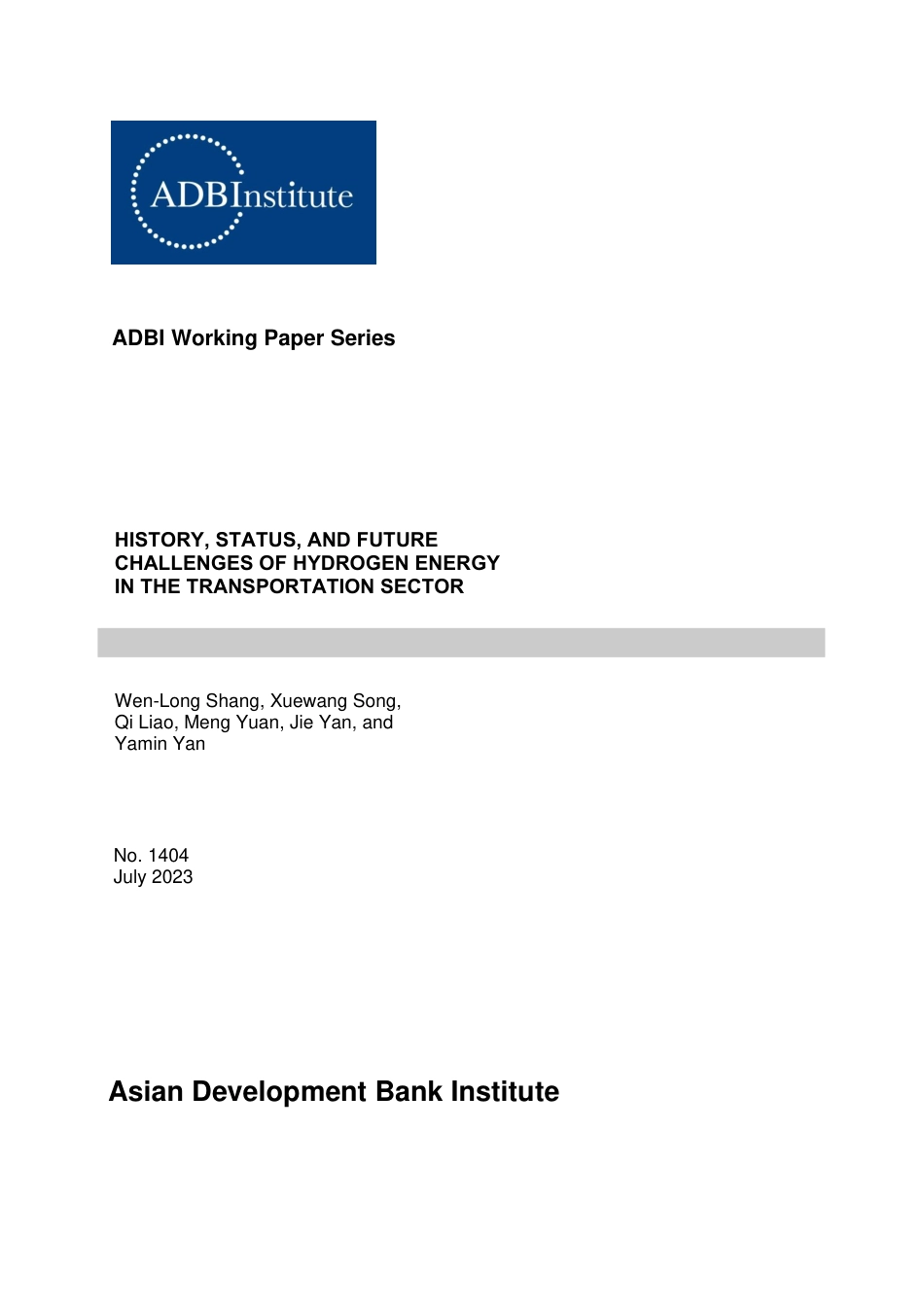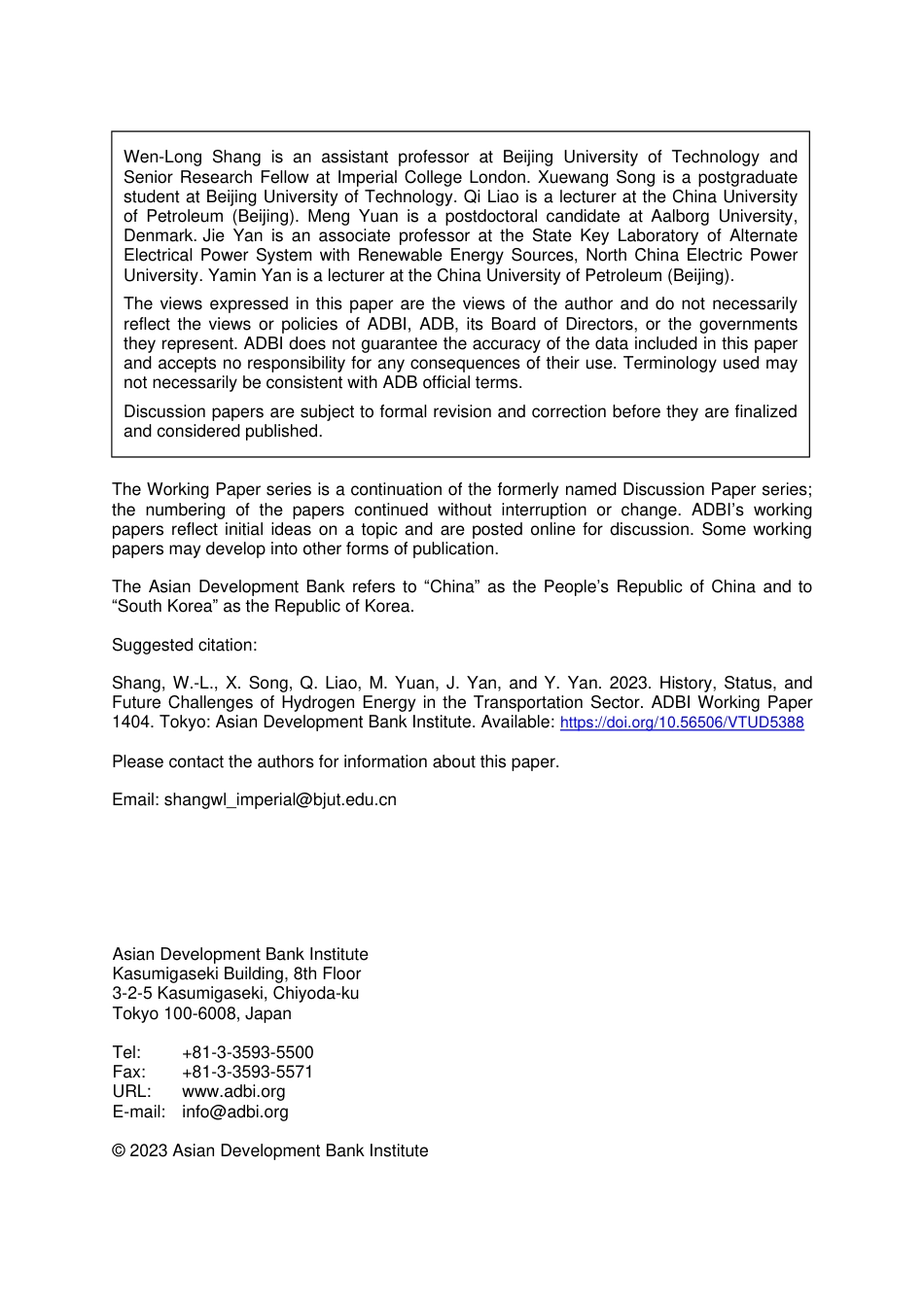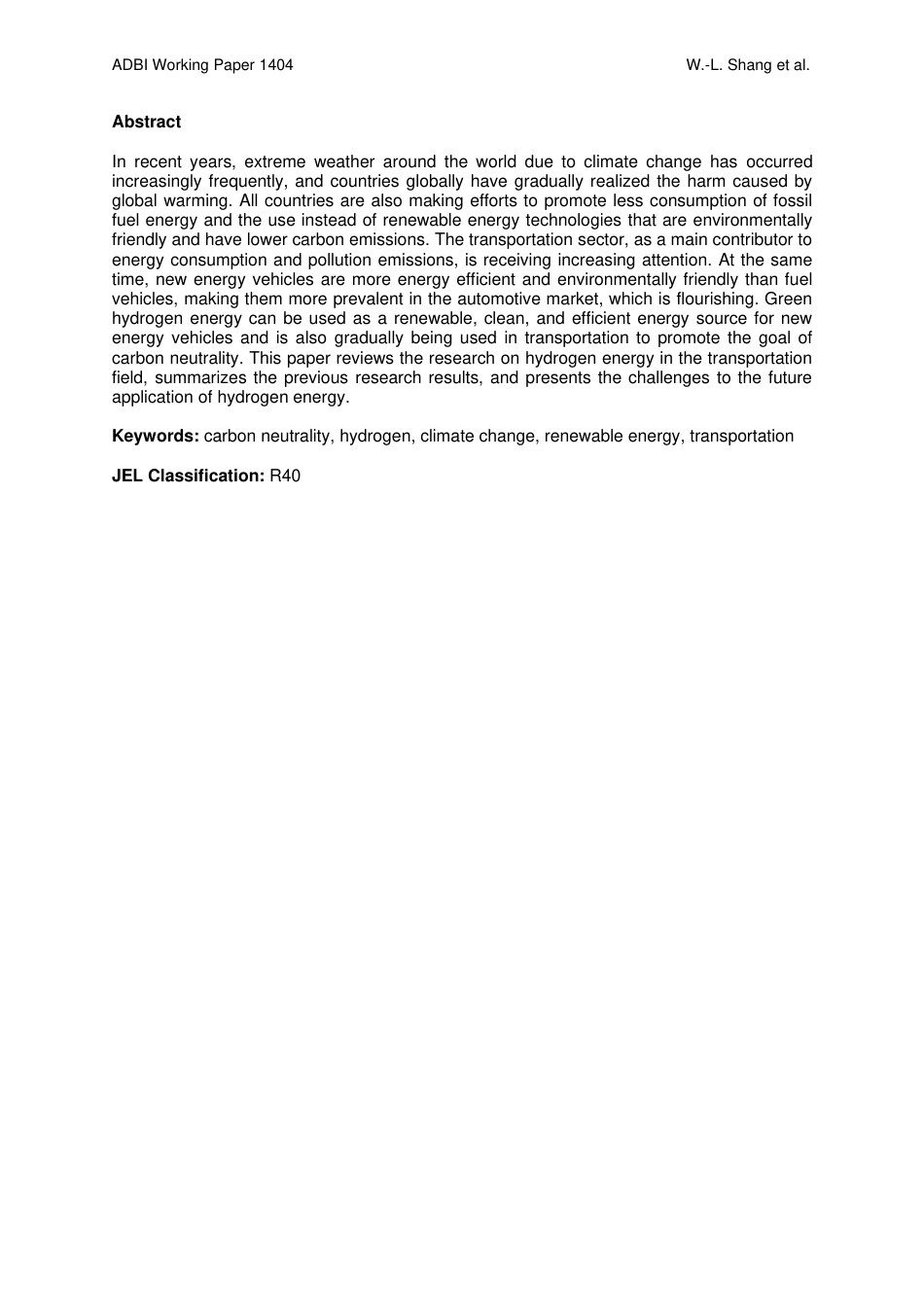ADBI Working Paper Series HISTORY, STATUS, AND FUTURE CHALLENGES OF HYDROGEN ENERGY IN THE TRANSPORTATION SECTOR Wen-Long Shang, Xuewang Song, Qi Liao, Meng Yuan, Jie Yan, and Yamin Yan No. 1404 July 2023 Asian Development Bank Institute The Working Paper series is a continuation of the formerly named Discussion Paper series; the numbering of the papers continued without interruption or change. ADBI’s working papers reflect initial ideas on a topic and are posted online for discussion. Some working papers may develop into other forms of publication. The Asian Development Bank refers to “China” as the People’s Republic of China and to “South Korea” as the Republic of Korea. Suggested citation: Shang, W.-L., X. Song, Q. Liao, M. Yuan, J. Yan, and Y. Yan. 2023. History, Status, and Future Challenges of Hydrogen Energy in the Transportation Sector. ADBI Working Paper 1404. Tokyo: Asian Development Bank Institute. Available: https://doi.org/10.56506/VTUD5388 Please contact the authors for information about this paper. Email: shangwl_imperial@bjut.edu.cn Wen-Long Shang is an assistant professor at Beijing University of Technology and Senior Research Fellow at Imperial College London. Xuewang Song is a postgraduate student at Beijing University of Technology. Qi Liao is a lecturer at the China University of Petroleum (Beijing). Meng Yuan is a postdoctoral candidate at Aalborg University, Denmark. Jie Yan is an associate professor at the State Key Laboratory of Alternate Electrical Power System with Renewable Energy Sources, North China Electric Power University. Yamin Yan is a lecturer at the China University of Petroleum (Beijing). The views expressed in this paper are the views of the author and do not ne...



